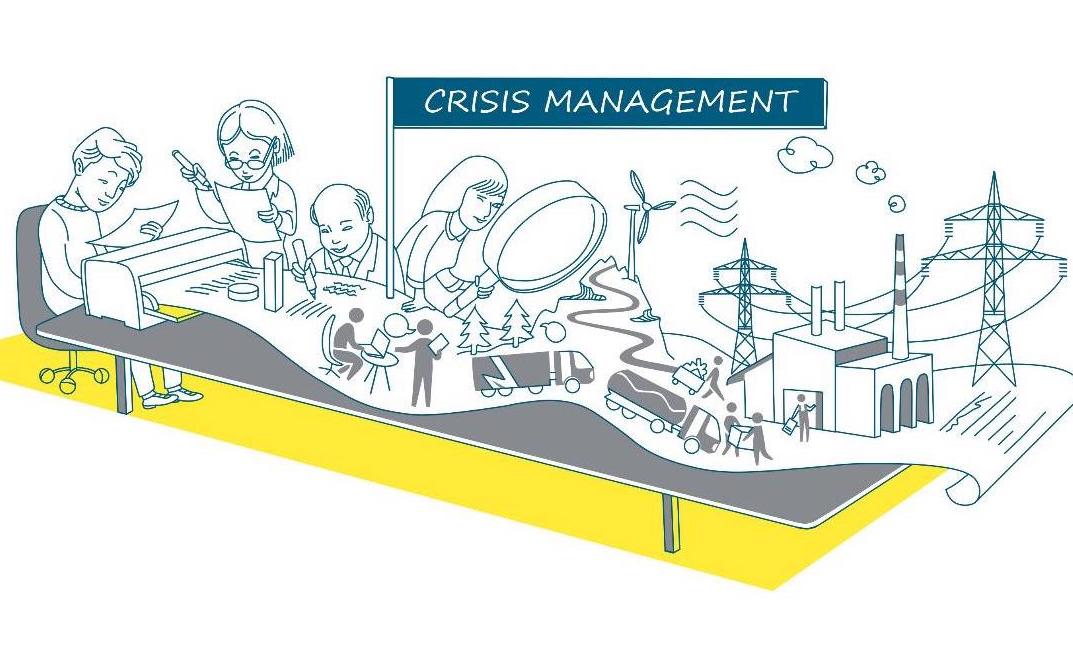Crisis Management - Business Continuity

Why writing an article? To shed some light and to make readers aware of a desired process in the management of any organization. Many employees are not aware of certain important aspects in managing of an organization, and as a result, their lack of knowledge can generate questions, conflicts or controversies in the implementation of actions and measures needed, which may be followed by either positive or negative consequences in terms of management of crisis periods. The acceptance of actions and measures adopted and their thorough implementation are extremely important in crisis situations. Moreover, the organization's management is responsible not only for the implementation of an efficient and coherent management, but also for the communication and correct application of the actions and measures meant to diminish or eliminate any potential negative impact on the entire range of assets of the organization.
What do you need to know?
-
What is a crisis?
A crisis is a situation generated by the unexpected manifestation of internal or external dangers to the organization able to cause a significant impact on various stakeholders of the organization (employees, suppliers, management, etc.), and which may have a potentially devastating impact on short, medium or long term, depending on the type of hazard. Examples of crisis periods are situations associated with natural disasters, accidental disasters, technological disasters (caused by cybercrime for example or major work accidents), internal conflicts (involving staff, capabilities, products or brand), an epidemic or a pandemic, etc.
-
What causes a crisis?
The causes of a crisis can depend on many factors, which can be dependent or independent of the organization. There are two main ways of manifesting crisis situations:
-
A sudden manifestation of the crisis that occurs unexpectedly (such as natural disasters or internal conflicts that involve and have severe effects on staff or human resources, attacks, accidents due to the creation of contexts of manifestation of major risks that lead to the destruction of the internal organizational environment);
-
A smouldering manifestation of the crisis situation that starts slowly, with some weak signals and evolves in stages; each stage must be understood and addressed as it shows up by specific methods and means to be implemented before the situation progresses to ultimately evolve into a disaster, such as major internal conflicts over products, brand, pandemic, accidents at work due to the generation and maintenance of situations of major risks leading to the destruction of the internal business environment, etc.
-
How important is crisis management and why?
What exactly is crisis management? It is a complex process with a firm and fast approach, managed as efficiently as possible to minimize potential damage to the business and all relevant stakeholders of the organization. In general, crisis management includes a set of preventive and reactive actions depending on the forecasts and the estimates made on the level of intensity, duration and scale of the negative impact. Specifically, the actions are reflected in a rapid and targeted approach on the elements of the crisis, and associated follow-up actions for the critical period, which are meant to secure survival of the organization and the possibility of rapid recovery after the crisis period.
Why do I say survival? Because a crisis can quickly turn into a disaster. The crisis can quickly and profoundly hit a business that, if it does not have strong economic stability, can be shaken from its foundations very quickly, and can go bankrupt in a few weeks. Therefore, the business can generate in its value chain, as well as in the supply-sales logistics chain, a negative impact felt by a large part of the stakeholders. Of course, this impact will be proportional to the actual level of danger posed by the crisis.
Management teams must put a lot of effort in developing and evaluating possible scenarios that may lead to a rapid recovery of organizations after the impact during the period of crisis. In general, companies have a set of procedures designed to balance the recovery process to be further adjusted after the economic crisis period, as part of the risk management process. Thus, sharing good practices in business communities is vital to increasing the efficiency of how organizations are to operate during crisis periods.
In general, a crisis may occur and manifest in various forms, the recommendation being that in all cases, companies be prepared in advance with a crisis management plan. But often some aspects with a potentially negative impact on business are not considered, while in case of a crisis of the internal processes, the management is forced to adapt quickly, by building new interim structures and by implementing measures specific to crisis management. Nevertheless, the management approach in a crisis can create the premises for business continuity, capitalizing on opportunities noticed in advance or in case of poor or delayed crisis management can lead to a total or partial closure of business processes. It depends very much on the type of crisis or the nature of the danger that generated the crisis and the potential of the organization to adapt to the local or global context, and last but not least, on the internal or external help available to reduce the negative impact of the crisis.
-
Which processes may be affected by the crisis?
In general, a crisis may affect:
- the operational processes and deliverables of an organization (products or services)
- processes involving employees
- processes involving suppliers and customers
- financial control processes
- strategic processes
In the crisis management procedures, special attention is paid to those processes that stabilize the business and lead to the restoration of a new equilibrium, and in the end to survival. In this case, those organizational aspects which are primarily dependent on the organization and to which the organization has a major obligation to protect them in the medium and long term, must be taken into account.
Our businesses are created to last and overcome, and therefore not to be closed in something like 3 months, and then possibly be revived after another 12 months. We must make people aware of it!
The stability of our business processes and the primary purpose of eliminating the risks associated with the value chain and/or supply chain that could jeopardize the business, as well as the management actions and decisions taken during the crisis, depend on the type of danger that generated crisis. Thus, the prioritization of actions in crisis management is done according to the domino effects that could occur in the medium and long term, and the prevention or elimination of negative effects. The more accurate the scenarios, the more accurate and beneficial the estimates can be for business survival and continuity, with minimal long-term negative effects.
If in the crisis management process all activities subject to major risks are addressed by actions that are rapid, realistic, feasible, controllable and monitorable recovery measures, then we can say that management acted more preventively and therefore less reactive to manage that particular crisis.
What is important?
-
Who leads the crisis management process and how?
Usually, within any organization the crisis is managed by a manager (usually appointed as crisis manager) who has specific skills and who has been trained either internally or externally to deal with these situations. This manager will have all the necessary delegated authority to manage the crisis from the beginning to the end. In addition, in crisis situations it is practically proven that an authoritarian type of management is more efficient than adopting a participatory-consultative style.
The crisis manageris involved in the implementation of the following steps:
-
CRISIS ASSESSMENT AND ANALYSIS:
-
establishes a work team for crisis management
-
establishes the working method and the ways of communication
-
identifies the key elements of the crisis and the processes that may be affected
-
identifies potential related hazards
-
develops together with the team and / or the management of the organization a crisis management plan
-
presents the plan to the management and agrees to make decisions in case of need
-
evaluates the process at the end of the crisis, including the losses generated
-
ANTICIPATION
-
centralizes scenarios on different processes to know the potential effects and reduce the associated negative impact
-
identifies feasible intervention actions in case of new dangers or disequilibrium in the actions established and implemented
-
EXECUTION and RESPONSE
-
ensures the precise and correct implementation of the measures established by defining roles related to the key personnel in the implementation of the actions
-
identifies the stakeholders that may be affected and how to work together to stabilize processes
-
MONITORING
-
frequently monitors all outcomes and possible internal or external dangers that may arise during the crisis period and the implementation of the action plan
-
creates alternative scenarios
-
MANAGEMENT and CONTROL
-
coordinates all actions established and agreed internally
-
controls the entire process of implementing the action plan to verify the correct implementation
-
presents alternatives to the management of the organization in the event of other incidental factors in the crisis that may degenerate into other serious situations
-
COMMUNICATION
-
communicates internally the decisions taken in the crisis management process
-
communicates externally issues and information of interest to all stakeholders
The most important aspect in crisis management is:
-
rapid management of the panic effect, if possible its complete elimination and preferably the prevention of its occurrence. Although it is often difficult to achieve, it is very important that the process is conducted in a lucid manner, to avoid the generation of disagreements that leads to discord and inconsistencies in implementation.
-
creating a realistic plan for managing the potential adverse effects identified during the internal analysis
Communication on how to manage the crisis is essential; it can bring "peace" both internally and externally, a quick acceptance in the implementation of the established actions and a sense of safety among all stakeholders. Last but not least, effective communication can contribute to the success of the implementation of the risk/crisis management plan and to a good start in drawing a restoration and business continuity plan for post-crisis.
Article written by Gabriela FISTIȘ, Country Manager at denkstatt






